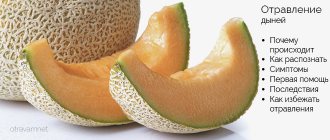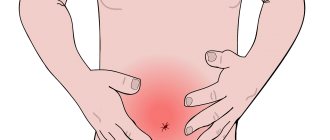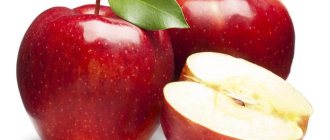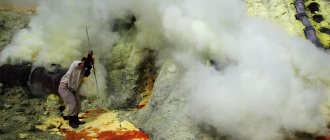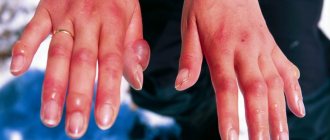- 3.1 The danger of mushroom poisoning from champignons
Champignon poisoning occurs infrequently, but remains quite real. Even completely edible, healthy mushrooms can be dangerous to the body. You need to know in what cases champignons can cause poisoning, and what to do in such a situation.
How can you tell if fresh champignons have gone bad?
- Yes, it’s immediately clear whether they are bad or not, if they are rotten, blackened or, on the contrary, dry and wrinkled, then throw them away
- By color and elasticity.
- they smell bad, the caps turn inside out and turn black, and mucus may appear.
- An unpleasant smell appears, they become slippery, the caps open and darken. Such mushrooms need to be thrown away, you can’t save them, but you can get poisoned.
- If it turns black under the caps, then the mushrooms are old
- weirdo, in the answer about pizza they already described the distinctive signs of rottenness...
- Eat it, if it vomits, it means it’s already spoiled
- If they turn black under the cap, then in principle it is no longer recommended to eat them, as some harmful substances accumulate there.
If it’s not clear, you can just stupidly put mushrooms in your mouth in any condition, record the consumption, and then just track your stool... :)
Primary processing and preparation
You can prepare a lot of different dishes from field champignon - it is fried, boiled, pickled, salted, frozen for the winter. The mushroom goes well with meat, poultry, and is used to make salads and sauces. All kinds of fillings for pies and cutlets are prepared from it. It is considered one of the best-tasting mushrooms of this genus and is edible even in its raw form, that is, it can be fried or made into soup without prior boiling. But it is not recommended to consume it in large quantities, since it is prone to the accumulation of heavy metals, the excessive intake of which in the body can cause the development of certain diseases.
With a reasonable approach, this champignon can become a real decoration of the table - it’s not for nothing that it is considered a delicious mushroom. Collecting and preparing it is simple - the main thing is not to confuse it with poisonous representatives of the mushroom kingdom. It is best for novice mushroom pickers to consult with experts, if possible, before putting champignons in their basket.
Forest champignon is a mushroom of the Champignon family. In simple terms it is called cap, wolf's mushroom and blyushka. This edible mushroom has a pleasant, woody smell.
The Latin name of the mushroom is Agaricus silvaticus.
They first learned about champignons in France in the 17th century, which is why they have a French name. Afterwards they became popular in England and Hungary, and then in the USA and other countries. In our country, champignons are known in the 19th century.
Useful: how to tell if mushrooms have gone bad / on the multi-team.ru forum
I used to go to the mountains for a couple of days, and that’s exactly what I did. Whereas, for example, meat or fish quickly rot and cause severe poisoning. Helpful tips: Wash and clean the champignons thoroughly before cooking. Want to try our bathing products? Preservatives can hardly revive a mushroom, even for a couple of days. Login quick registration openid email password forgot your password? So just go to the forest and collect freebies? Ru how easy it is to do everything this graduation season, lose weight by summer, summer season, become an author! And how can you tell if they have gone bad?
Description of the appearance of the mushroom
Fake champignons differ depending on the age and place where they grow. The most common mushrooms are those of a reddish hue, which are called yellow-skinned. Also familiar is the type of false champignon called “flat-headed”. It has a sharp, unpleasant odor reminiscent of iodine.
The color of the false champignon cap may vary. If the mushroom grows in a well-lit clearing, it will have a grayish tint. Organisms growing in forests are beige in color with an orange tone. A young false champignon has white plates under the cap, which darken and turn black with age. They are easy to distinguish because real mushrooms have a rough cap, sometimes covered with scales, while the look-alike has a smooth skin.
The false champignon has a stem 10 cm high and 2.5 cm in diameter. It is cylindrical in shape, slightly thickened at the bottom. There is a white double ring in the middle. Under the cap there are thin, frequent white plates with a pinkish tint. In older mushrooms they become dark brown in color.
Differences between false and edible champignon
False (poisonous) and real champignons are often confused, and this is deadly. The poisonous counterpart of the champignon has a dark circle in the center of the cap; when pressed, yellowish spots appear. This verification method does not provide an exact guarantee, so it should be combined with other methods.
You can find a false champignon among the real ones by the following characteristics:
- its cut quickly acquires a bright yellow tint;
- the double has a strong smell of disinfectant;
- When boiling, the water also turns yellow.
These are insidious mushrooms; even after long cooking, the toxic substances in them do not disintegrate.
The inedible champignon can be similar to pale toadstool, white fly agaric, stinking fly agaric and meadow mushrooms. They have a similar color and cap shape, which sometimes resembles a chanterelle mushroom. False champignons most often appear in July in mixed and deciduous forests; they can also be found in clearings in city parks.
Real champignons look different. The cut area has a pinkish tint. Also, the edible mushroom begins to grow in May, while the false mushroom begins to grow only in mid-summer.
How to determine the freshness of champignons :: food :: kakprosto.ru: how easy it is to do everything
There are a number of popularly loved dishes that are difficult to imagine without mushrooms. These are mushroom pies, meat with mushrooms, julienne, a huge number of salads and the like. Traditionally, most of these culinary delights use commercially grown champignons, which are easy to buy in any supermarket. But before purchasing mushrooms, they should be checked for freshness . Of course, it is difficult to get poisoned by champignons, but it is quite possible to ruin the dish and the mood of yourself, as well as the guests.
Shelf life
The shelf life of champignons depends on two factors: the method and place of storage. At room temperature, mushrooms will begin to spoil within a couple of hours. They will stay fresh in the refrigerator for up to 5 days.
You can also freeze the product, maximizing its shelf life:
- frozen in its original form - storage for no more than 6 months;
- frozen, fried and boiled - storage for no more than 6 months;
- freezing in dry form - storage on average up to 1 year.
Important! Before packing the fried mushrooms, cool them so as not to burn the packaging with hot oil.
How to clean champignons
HOW TO CLEAN CHAMPIGNONS Added :
Olga
Added:
02-09-2006 23.37
Comments:
My father grows mushrooms, so we had to clean them often and a lot. They used a knife to remove the soil (if it remains on the legs, as a rule, there is none on the caps), and rinsed it under running water. There is no need to peel off the top layer of the cap or remove the “skirt”. If the mushrooms were very small - and in such cases there were a lot of them, you couldn’t peel each one separately - then they simply washed them in handfuls under running water, lightly rubbing them against each other (the main thing is that they were without soil, of course). In general, in stores and markets they sell mushrooms in such a form that there is no need to clean them - just rinse them with water. But “dry washing” is a questionable matter; hardly anyone wants to smell and taste market (or store) dust in a frying pan... On the other hand, soaking in water is also not worth it.
Thank you for your attention:)
In what cases should you consult a doctor?
In general, in case of any mushroom poisoning, it is recommended to call an ambulance. However, many people prefer not to consult a doctor if they are intoxicated with champignons. Since mushrooms are not poisonous, at first glance it seems that poisoning cannot lead to serious consequences.
However, you should definitely consult a doctor if:
- the poisoning was caused by canned mushrooms, it can lead to the development of deadly botulism;
- symptoms of poisoning do not go away for 2 days or more;
- intoxication is accompanied by a pronounced loss of strength, palpitations and dizziness;
- poisoning occurred in a pregnant woman, a teenager or a person with chronic diseases of the digestive system.
If too many toxic substances enter the body during poisoning, then even champignons will begin to pose a serious threat to human health and life.
I bought shrimps from “fish” and champignons from “fruktoff”
“Yesterday, October 24, I suddenly wanted good shrimp. For beer. I followed them to the Golden Fish
", which is on K. Marx. I spent a long time choosing and finally chose the largest and most beautiful ones. I didn’t smell them in the store, but cooked them at home and... threw them away!
Threw it away due to rottenness.
And I wished the owner of the store “bon appetit” with all my heart!
I wanted these.
Reader"
From the editor:
Unfortunately, the flow of complaints about our website addressed to Ozero trading enterprises does not dry up. One thing is “pleasant” that in the capital of our Motherland itself, judging by television stories, things are even worse.
As for the shrimp from the “fish”, as one of the employees of this store explained to us by phone (7-53-49), the solution in this situation is simple: with these shrimp you had to return to the store and present the purchased product to the seller. The buyer would have received a refund or replaced the shrimp. By the way, shrimp are a perishable product.
And here’s another complaint, this time about the Fructo ff store,
which came earlier:
“We bought champignons at the grocery store at 8, Pobeda Ave.
When we unpacked them at home, we realized that these mushrooms were for when you wanted to poison your enemy. They immediately returned to the store and, “without leaving the cash register,” they returned the money to us. Thank you, of course!
But the mood was spoiled, since the plan was to please the family with a dinner of stuffed tomatoes. I had to stuff it without champignons...
Reader".
Distribution and when to collect
Field champignon is a saprotroph, and it grows in soils well fertilized with organic remains. It prefers to settle in areas free of trees, where there is a lot of grass - hence the name “field”. Favorite places of growth are forest clearings, roadsides along forest roads, parks, clearings, and sometimes pastures. Mushroom pickers find them both on the plains and in the mountains - most often where nettles grow. It is extremely rare to find it near trees, except perhaps under a spruce tree.
These mushrooms feel great both in the company of friends and alone. Sometimes they grow to form arcs or circles.
The common champignon is distributed throughout Russia, and is also found in Europe and the Caucasus. Often found by mushroom pickers living in the northern temperate climate zone. Collecting champignons begins in May and continues until November, depending on the region.
First aid for poisoning
The appearance of signs of mushroom poisoning is the basis for immediately providing first aid to the poisoned person.
- Rinse the stomach thoroughly. To do this, the patient should be given at least one liter of water to drink, and then, by pressing on the root of the tongue, induce vomiting. Repeat this procedure several times until the rinsing water is clear. This will help to cleanse the stomach as completely as possible of mushroom toxins that have entered it.
- If mushroom poisoning occurs without diarrhea, then the victim should be given 1 tablespoon of castor or vaseline oil.
- To bind toxic substances that have already entered the small intestine, you must take any sorbent, for example Polysorb MP, Smecta or Activated Carbon.
- Place the patient in bed, wrap him warmly, and apply a heating pad to his feet.
- Provide plenty of fluids. You can give strong black tea, mineral or regular water without gas.
Possible complications
Intoxication, accompanied by poisoning, contributes to the development of various disorders in the functioning of the whole organism.
Diarrhea and vomiting cause severe loss of electrolytes and fluids. All this is accompanied by skin atony and changes in blood pressure. The amount of urine produced decreases, and the kidneys do not remove the resulting toxins. Due to the effects of harmful substances on the pancreas, chronic or acute pancreatitis worsens. When the stomach is irritated by toxins, gastritis may occur. In most cases, the victim needs the help of qualified specialists to minimize possible harm.
Further treatment
Doctors who arrive on call must assess the patient’s condition. Stabilizing measures are being carried out. Doctors need to return the cardiovascular system to proper functioning and normalize the patient’s breathing. Then you need to:
- administer medications to relieve nausea and vomiting;
- eliminate pain syndrome with antispasmodics;
- replenish the water balance with a dropper.
Once the patient is stabilized, hospitalization may be required. Further treatment takes place in a hospital setting, in the intensive care unit under the supervision of doctors. Botulism requires urgent administration of serum.
Virulence
The inedible champignon actively absorbs toxic substances from the soil. Consumption of such mushrooms leads to severe intoxication.
Toxoids block the production of deoxyribonucleic acid, causing healthy cells to die. This affects the kidneys, intestines and liver the most. A large portion of mushrooms eaten can be fatal.
Poisonous champignons also contain substances that negatively affect proteins. This causes disruption of the contraction of the heart muscles.
Symptoms of poisoning
The first sign of poisoning is vomiting and stomach upset. These symptoms appear within 2-3 hours. Later, stomach colic appears. Similar symptoms are caused by toadstool and poisonous meadow mushrooms.
There are several stages of champignon poisoning. Their description:
- Spasmodic pain appears in the abdomen, body temperature rises. Later, diarrhea begins.
- The person feels a slight improvement in health, but toxic substances continue to affect the liver and kidneys. Analyzes confirm this. Remission lasts 1-2 days.
- At this stage, damage to internal organs reaches its peak. Liver and kidney failure begins.
In case of poisoning with false champignons, it is necessary to call an ambulance at the first stage of poisoning. Before her arrival, it is important to remove toxins from the body.
Description of first aid:
- drink 1 liter of a weak solution of potassium permanganate and induce vomiting to rinse the stomach;
- take sorbents at the rate of 1 g per 1 kg of patient weight;
- a warm heating pad is placed on the stomach and legs: this helps to avoid circulatory problems;
- drink strong tea or warm water.
Need to know
The main risk group is children and pregnant women. The use of this product is contraindicated for them. The only exception would be 100% tested mushrooms. And since it is almost impossible to test them at home, without resorting to laboratory tests, it is better to refrain from using them. Moreover, the immunity of these groups is quite weak, and it is extremely difficult for them to cope with even a small proportion of toxins, and it is no longer possible to correct the consequences of the influence of poisons on the body.
Interestingly, ready-made mushroom dishes should be stored in a cool place in enamel containers for no more than 24 hours.
To summarize, it should be noted that it is easier to prevent poisoning than to deal with its severe consequences later. The main methods of preventing intoxication are to select high-quality mushrooms and carefully examine them first. Regardless of the place of purchase, be it a supermarket, market or personally collected products, the potential risk of poisoning is always present. Although, of these three sources, it is better to choose a supermarket or, if you rely on your own experience as a mushroom picker, give preference to mushrooms collected in the forest.
However, by and large, nothing can insure against an accidental error. Therefore, if possible, you should minimize their use and always take the necessary precautions.
If your stomach hurts after eating mushrooms, you should immediately seek medical help. Any delays pose a great danger to life and health.
